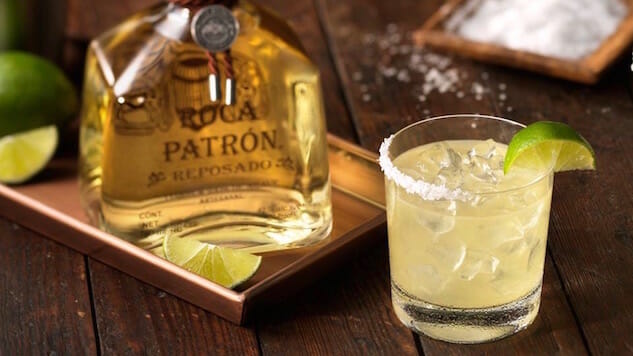Everything You Need To Know About The Margarita
Photo via Patron
The margarita is one of those cocktails whose popularity has been its downfall. At its core, it’s a respectable cocktail deserving of a place among the greats despite its relative youth. However, over the years the recipe has been reproduced, watered down and bastardized beyond the point of recognition with lesser ingredients being added for expediency and economics. (I’m looking at you, sour mix and triple sec.) Sterling Archer said it best:
Similar to other popular cocktails, the history of the margarita is a tangle of tall tales and false claims. Let’s take a look at some of the most prevalent ones.
A daisy by any other name
The Daisy was a common, one-size-fits-all Prohibition-era cocktail combining a base spirit, juice, a sweetener and soda water. It’s suggested that smugglers running booze over the border with Mexico experimented with a tequila daisy one night, calling it a margarita, which is Spanish for daisy.
Fussy customer

Jump ahead to Tijuana circa 1938 and you’ll find Carlos “Danny” Herrera, who allegedly created the margarita at his restaurant, Rancho La Gloria, to accommodate guest Marjorie King, who was allergic to all alcohol except tequila. Using the original tequila shot (served with salt and a lime) as inspiration, Herrera recreated those flavors in a cocktail glass. Such innovation is worth remembering the next time those of us in the hospitality industry are asked to accommodate those food allergies we so often grumble about.
Diplomatic ties

Another legend places its creation at Hussong’s Cantina in Ensenada, Mexico, in 1941. The inventor here is bartender Don Carlos Orozco, who whipped up the cocktail one day for Margarita Henkel, the daughter of the then German ambassador.
Making it official
If you’re looking for an official origin, the Mexican news service Notimex credits Francisco “Pancho” Morales with its creation at Tommy’s Place Bar in El Paso-Juárez in 1942.
-

-

-

-

-

-

-

-

-

-

-

-

-

-

-

-

-

-

-

-

-

-

-

-

-

-

-

-

-

-

-

-

-

-

-

-

-

-

-

-










































